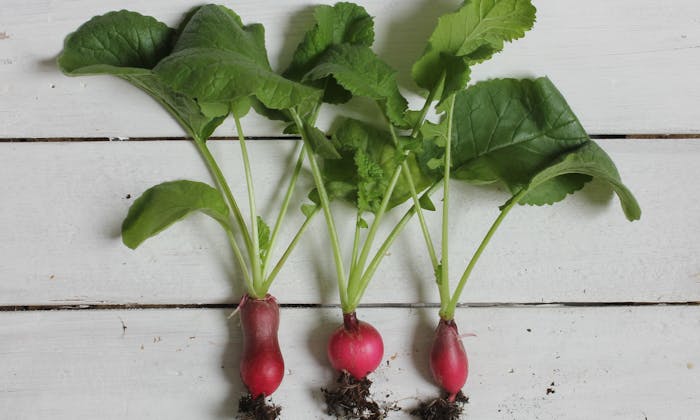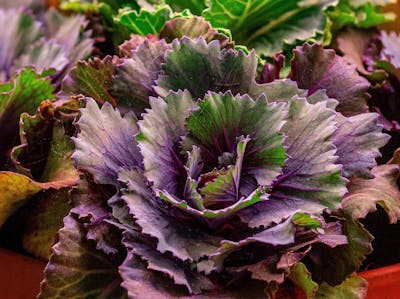Radishes add a nice peppery crunch to any dish and they are great pickelled.
Radishes are a must grow, cool-season vegetable. They can so easily be fit in the spaces between other vegetables. A favorite technique of many gardeners is to plant them next to something that grows slowly but will eventually need more space, such as beets. By the time the beets need the space, the radishes have already been harvesed.
Radishes grow very fast. They can be ready in as little as 4 weeks. This along with their compact size makes them so convenient to grow, and succession planting is a necessity.
History
The sharp pungeancy of a radish is a giveaway to it's family. Radishes are in the Brassicae family, that is, mustard (and cabbage).
Radishes have been grown for so long, and with such a broad distribution that it isn't known where they originated. Current belief among scientists is that it originates in Southeast Asia, since that is the only place the wild form has been found.
There are many varieties of radish, from Daikon, which is grown for oil, to the common garden variety that has different colors like black or "watermelon" which has pink swirls. Daikon radishes take months to develop, here we are concerned with the common garden variety.
How to Grow Radishes
Radishes are a cool season crop. They grow very fast. The seeds do not need to be planted deep, only about 1/4 inch or slightly less.
Make sure to allow adequate space between the seeds, about 2 inches between seeds. This will prevent competition and physical contact which can cause stunting and deformity.
As a root vegetable, radishes do best in loose soil that is free of rocks. They need consistent water and full sun.
Harvesting
Radishes should push up from the soil slightly so you can judge their size before harvesting. If they aren't pushing up, you can remove a little dirt from the top to get a better look. This won't do any damage.
A good radish is about an inch wide. If you let it grow for too long it can harden and become too fibrous to eat.
Take caution when pulling a radish out of the garden bed so you do not damage the roots of any surrounding vegetables.
Both the root and the leaves are edible. If you won't be using them right away it's best to remove the green tops immediately and store them separately otherwise they will draw nutrients from the root and both will spoil quickly.


